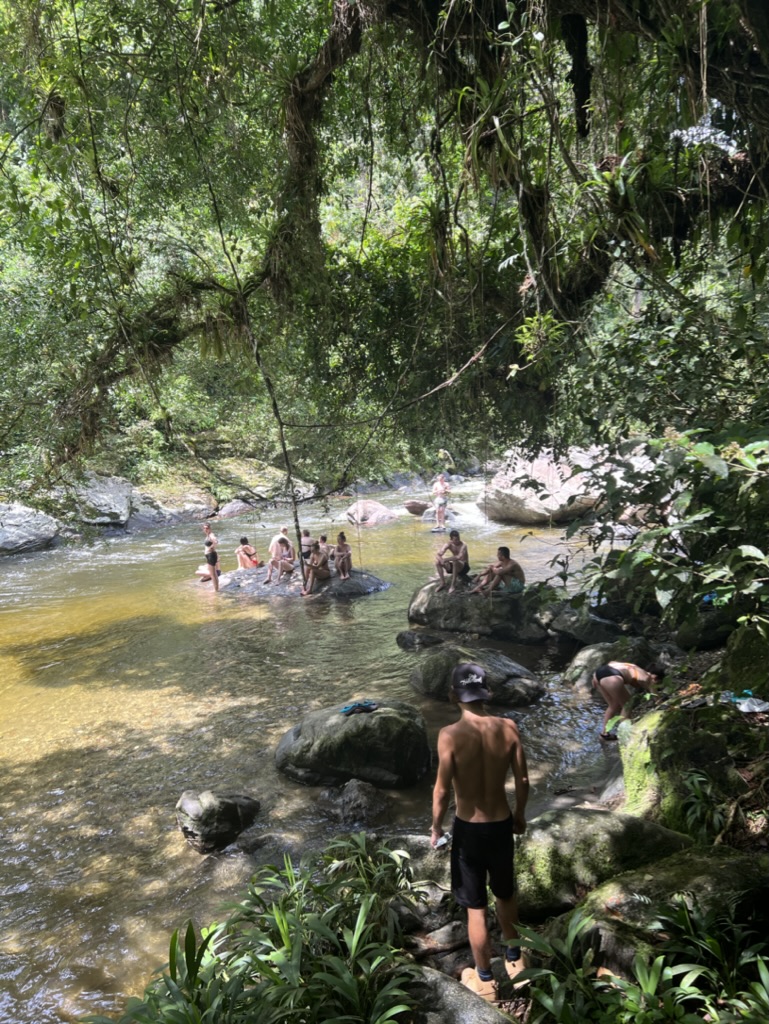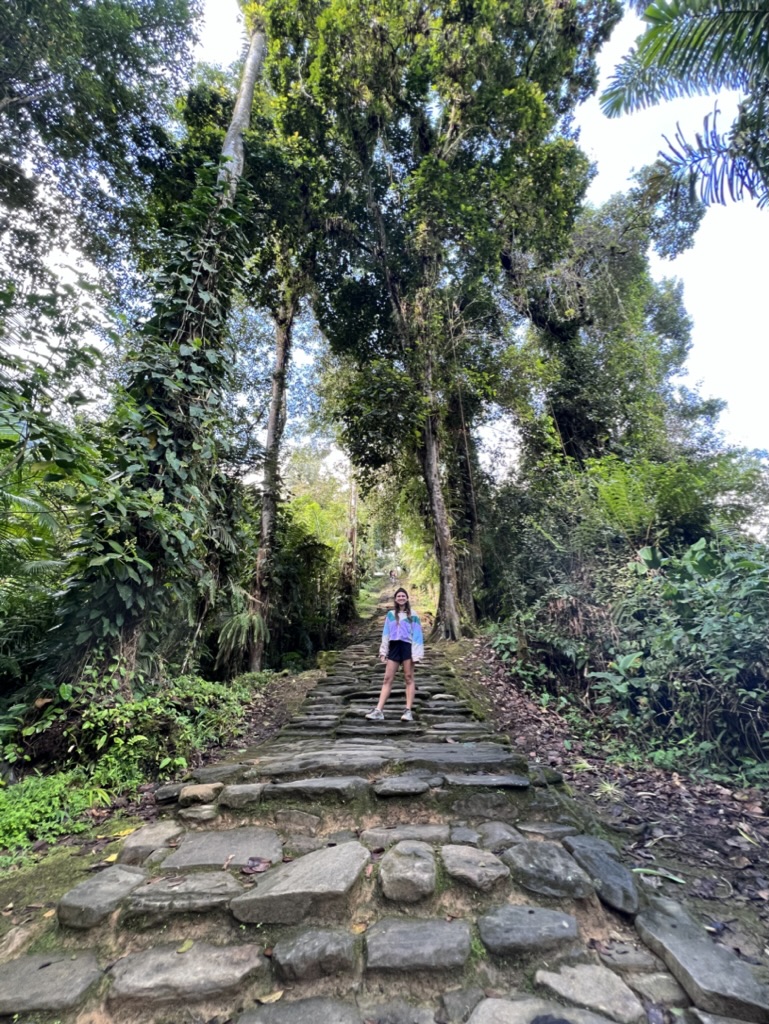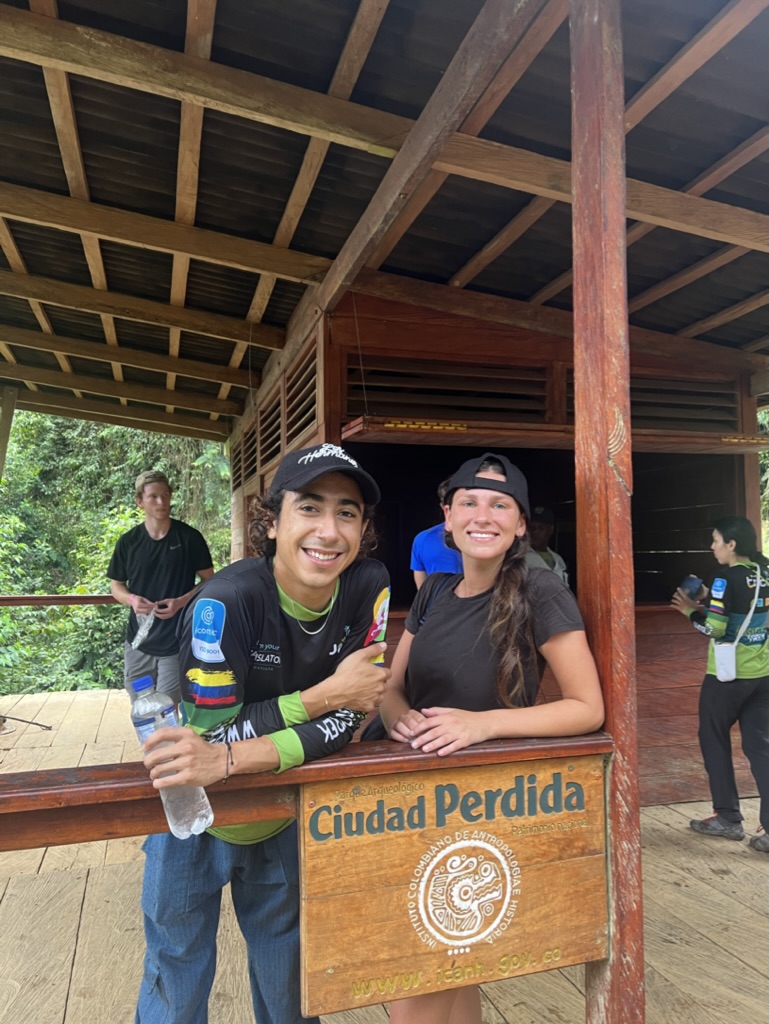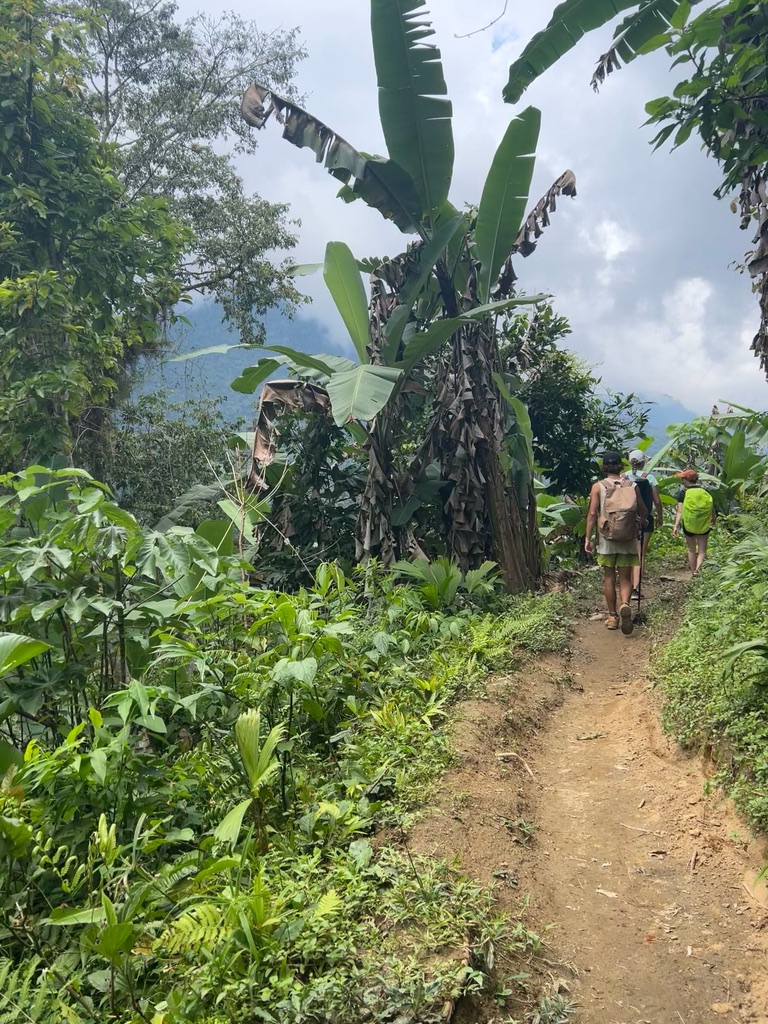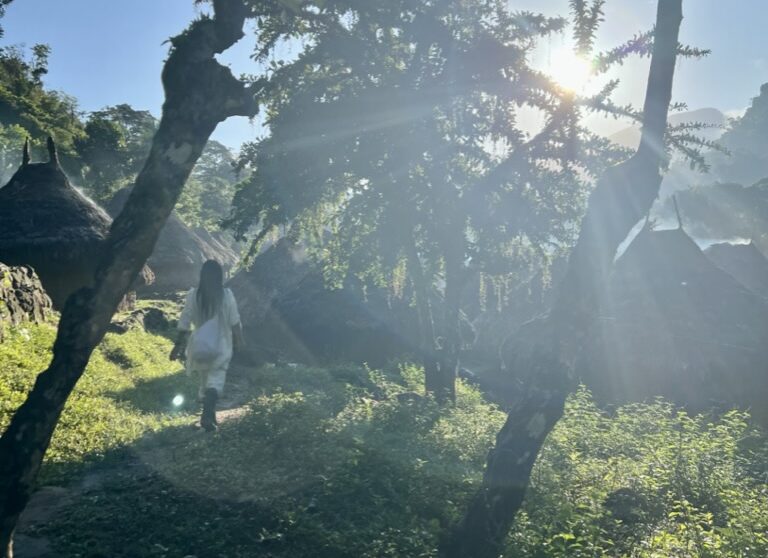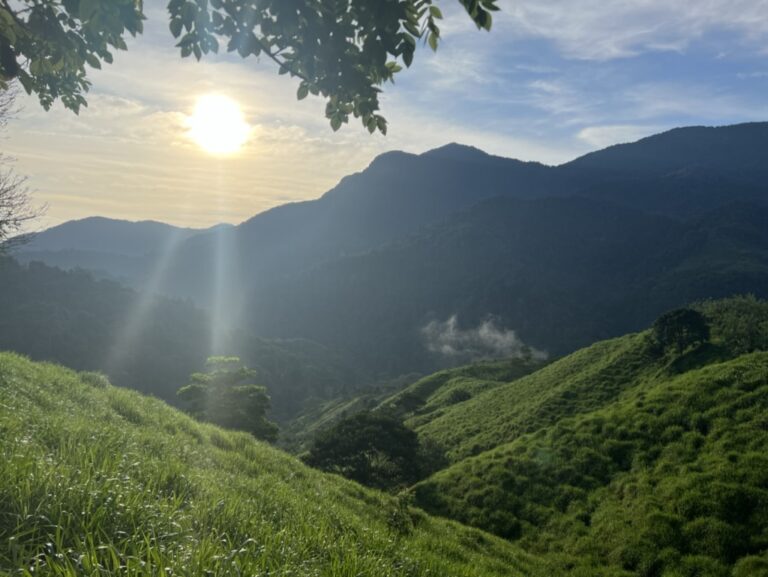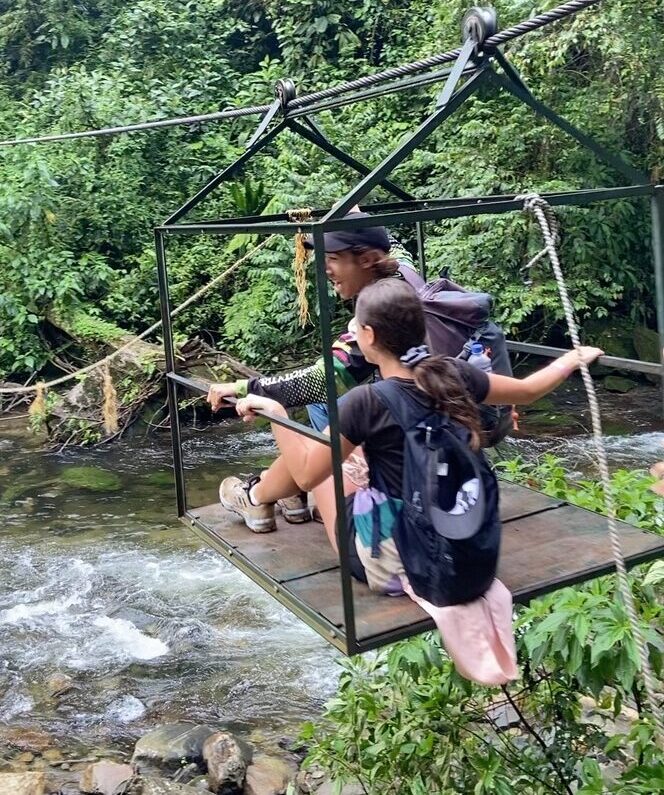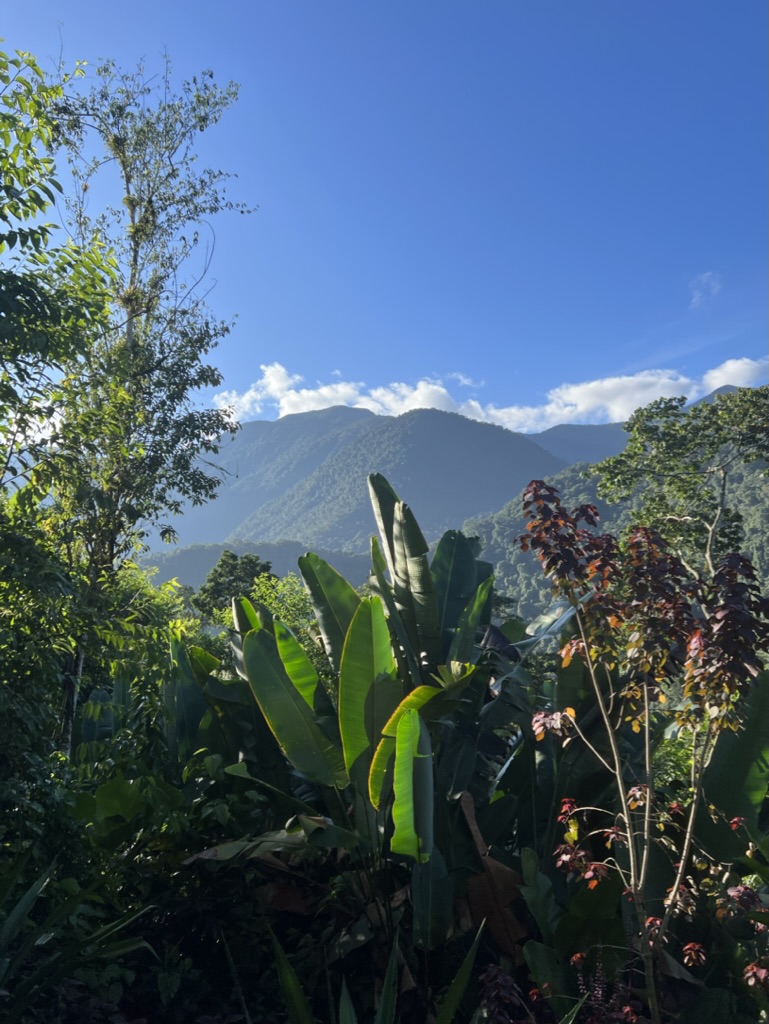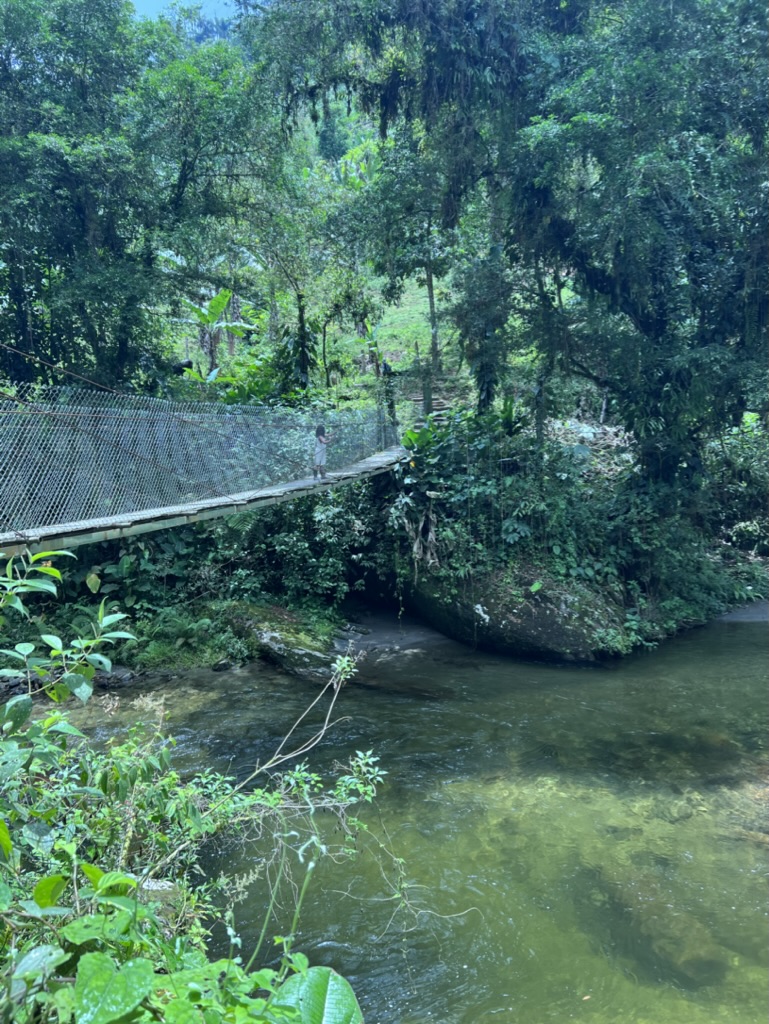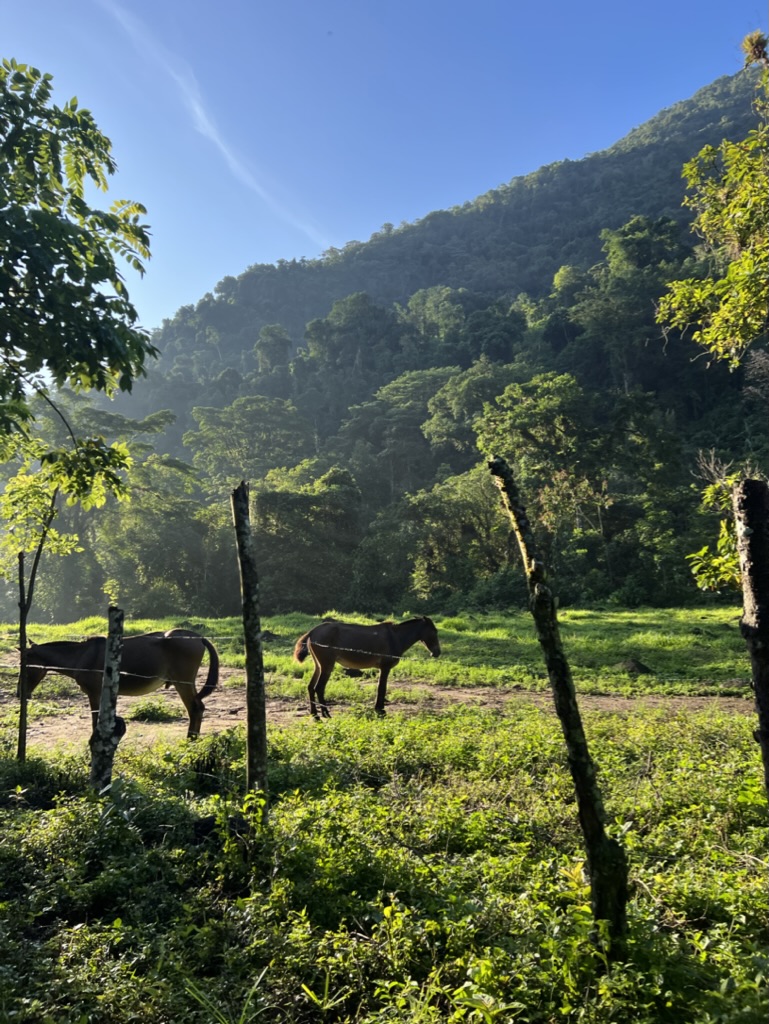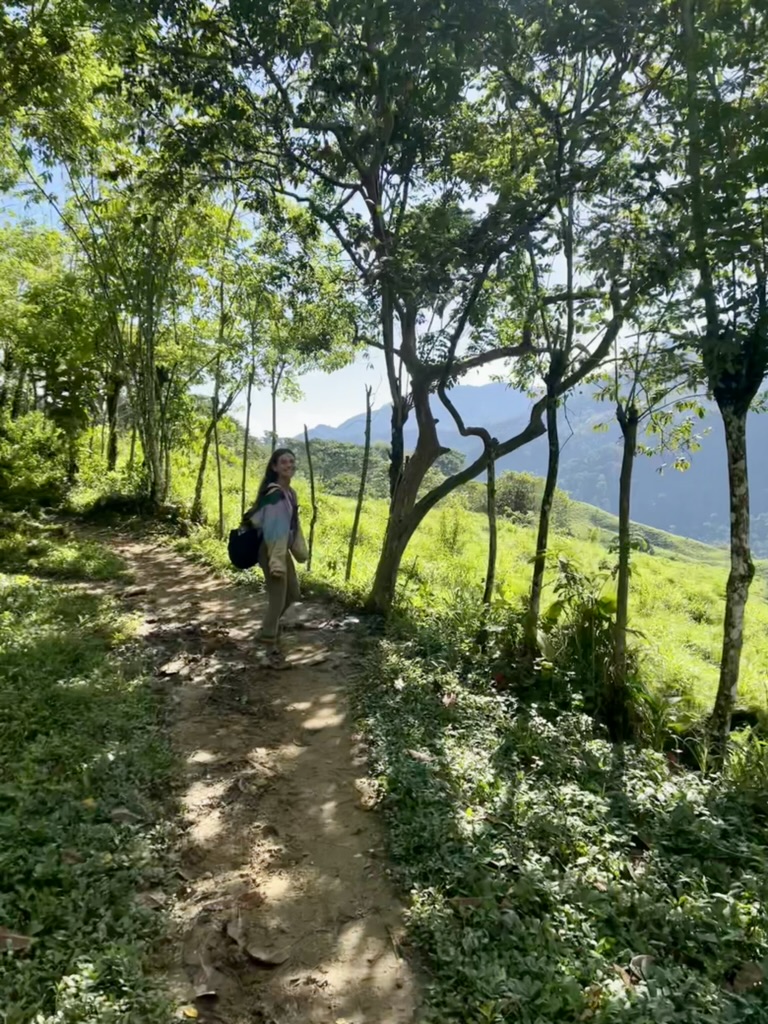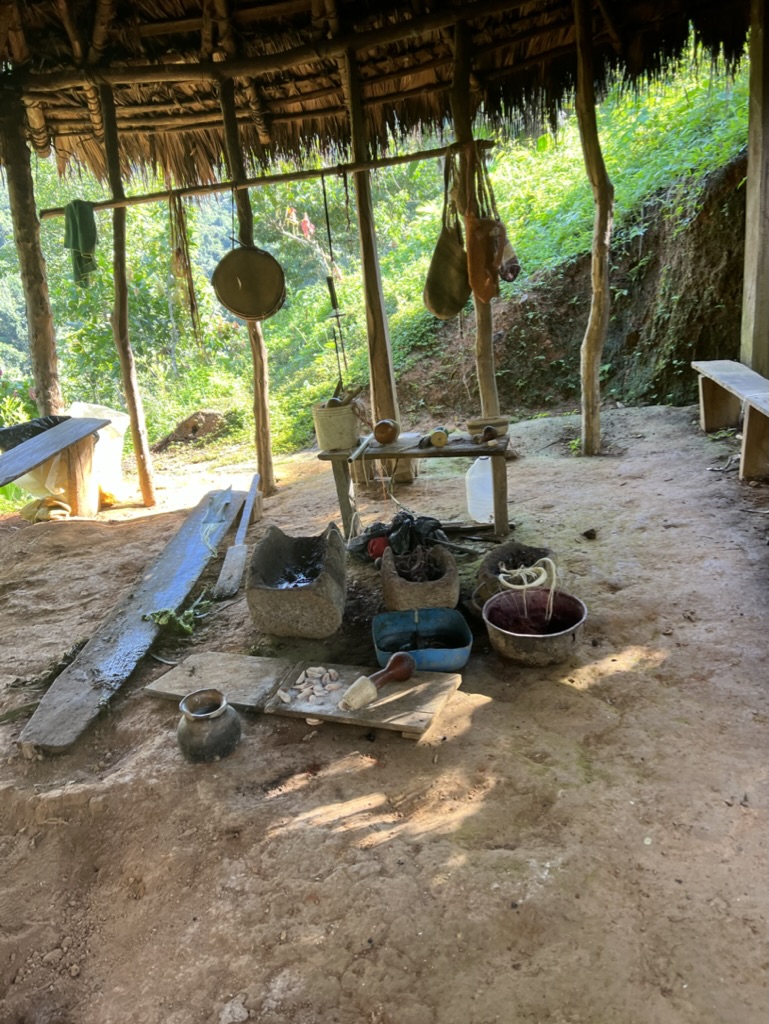THE LOST CITY TREK
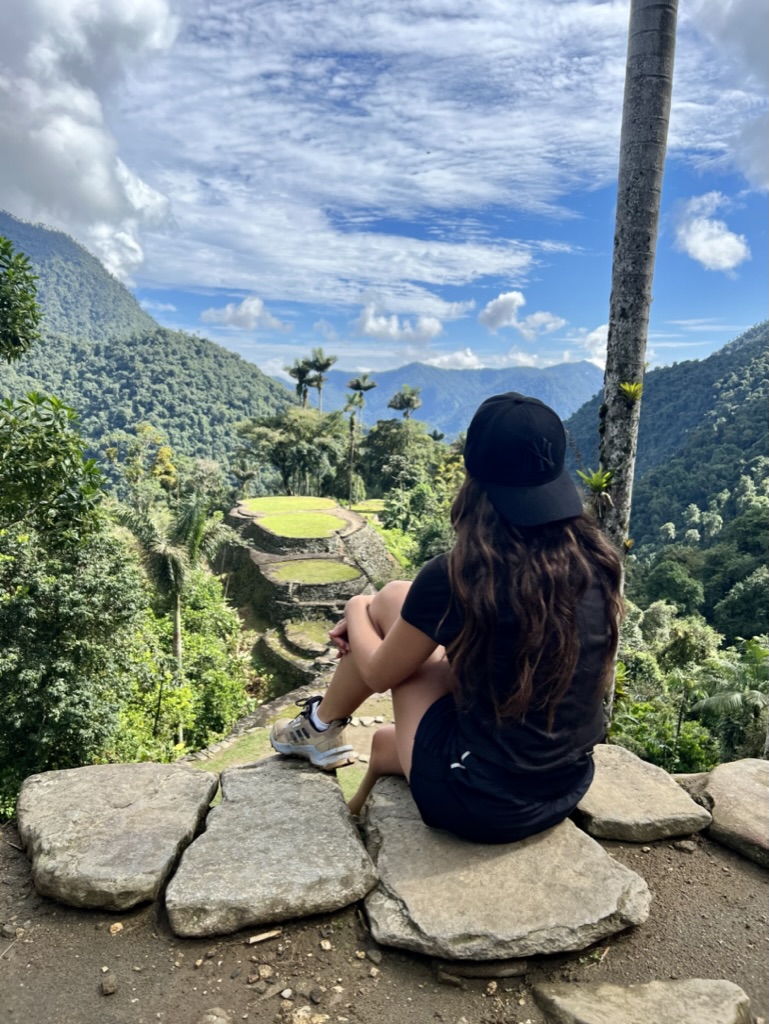
If you’re debating – this is your sign, DO IT!
During my year long trip in Latin America, there wasn’t a single country that I disliked, but also not many that I felt a sense of “home” in either. Colombia was an exception. Maybe more than any other country, I could settle in Colombia. When the opportunity presented itself to return, I was anxious to check a few more items off of my Colombia bucket list, while of course revisiting some old favorites. The boat from Panama just so happened to drop me off in the north, so the trek to the lost city, La Ciudad Perdida in Spanish, seemed like the most natural progression of events.
The compelling factor – cheating is not an option. This is contrary to many of the world’s most awe-inspiring attractions where you have the choice of taking the trails, a pilgrimage of sorts, rewarded with a view as a token of your hard work OR you can reach the same exact view, via a bus, train, or a much shorter hike. The latter saving you time, sweat, and maybe even some tears. I’ll admit, when faced with the option, I deliberate extensively. Maybe not everything needs to be truly earned? I won’t always go for the easy way out, but I do take into consideration “bang for your buck”, or in most cases, the most efficient expenditure of time and effort. However, in regards to La Ciudad Perdida, an ancient civilization hidden within Sierra Nevada mountain range, the journey is most definitely as spectacular, maybe even more so, as the destination.
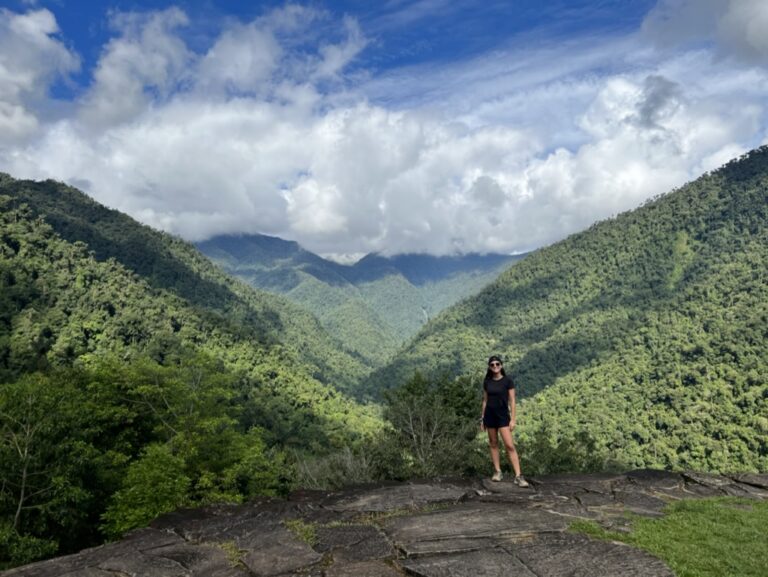
What to expect:
- Weather: We got lucky, very lucky. The first day was a bit hot and humid but cloudy. I could imagine if it was sunny, that first day’s hills could be brutal. But then you head into the shaded jungle where the sun is no longer a factor. You’ll start sweating day one and you most likely won’t feel dry for the next 4 days. We experienced a few small windows of rain, more like a drizzle, throughout our hike, but our group started early, as most do, and moved at a good pace where we arrived to the accommodation right before it started to pour
- Food: They feed you well – even vegetarians. No one goes hungry. You can buy snacks and water bottles along the way for a premium price, which is only fair considering they were transported from town by foot and/or mule. At these snack points, they also give you fresh fruit. This may actually be the best fruit you’ll ever eat – as my Colombian friend says, “Hunger is the best condiment”. Each accommodation also gives you a snack, sometimes a candy bar, popcorn, hot chocolate, coffee, etc in addition to breakfast, lunch, and dinner. There is a chef assigned to each group and they hike, carrying ingredients, and prepare the food at each of the camp sites. For reference, I didn’t have to buy any snacks along the way. Filtered water is offered at each of the camp sites. So you’ll need enough water for the first day, and then you can refill at the accommodation
- Guides: All groups are led by a guide, some are indigenous, while others are not. There are built in stops at Wiwa villages where they teach you about their culture, daily practices, and crafts. As mentioned, each non Spanish speaking group is provided with a translator. The guide and translator sandwich the group, so you can go at your own pace knowing that you won’t be left behind. It’s a tough trail to get lost on as it is pretty well maintained, but the reason I believe that almost anyone in decent health (who is ok with being a bit uncomfortable) can do it, is because you can go as slow as you need. Everyone will eventually make it to the camp, the question is more so if you’ll get stuck in the rain. This was the case with two American girls who would arrive 2-3 hours later than everyone else. Each afternoon they would show up as dinner was being served, soaking wet, hiking in their bikinis
- Accommodations: Don’t expect luxury and maybe bring one of those sheet sleeping bag liners if you’re easily skeeved. These accommodations blew my mind. They are in the middle of absolutely no where. They cannot be reached by vehicle, only mule. And they are full blown structures with kitchens and toilets, even TVs that can stream soccer games. I swear they are nicer than accommodations in la guajira (by far), and la guajira is very much accessible by vehicle. Most nights we slept in bunk beds with mosquito nets and then one night was an individual tent/bed situation. To be transparent, some people got some gnarly bites of unknown origin. They thought it could be bed bugs, but our kind hearted guide sweetly explained to them that they were just flees from the dogs who sometimes go into the tents. Not sure that that made anyone feel better, but sleep in long thin layers and bring a liner if you’re concerned. I didn’t and I was fine
- Be prepared for early start times, wake up was around 5am. That being said, I think I was asleep each night by 9 at the latest
- Money: As of 2022, the fixed price is 1,400,000 Colombian Pesos which is about 280 USD at the time of writing this blog. Also bring a bit of cash for snacks and water, a donation at the lost city, and a tip to the guide/translator if you wish but I’m not sure that this is the norm
- Electricity: Most of the camps run on a generator at night so you can charge your devices between certain hours
- Difficulty: This is an out and back trek, not a loop. One of the most challenging parts for me is with every steep incline or decline, is knowing that I was going to have to battle it in reverse on the way back. What a relief though when you know you have conquered the terrain, twice, and won’t have to repeat it. It would be irresponsible for me not to mention that many blogs note that this is one of the most difficulty treks in all of South America. It was by no means easy, and I can’t stress enough that you have to be in decent shape, but since you’re not fighting much altitude, I’d say it’s on par with most multi day treks. There are about 1200 (relatively small) steps leading to the lost city itself as well as a cable car crossing so people with knee issues and/or fear of heights, be prepared
- Alternative forms of transportation: Mule and moto. I don’t recommend either, especially the mule. If you don’t think you can make it on your own, don’t subject an animal to carry you. If you’re hurt along the way, for sure, do what you need to do. A small portion can be done by motorcycle, but this is such a small, insignificant amount of the entire trail. On our way back, I jokingly put up my thumb to a passing truck. To my surprise, he stopped. By the time you’re at this point where there is a drive-able road, you’re almost done. So I turned down the ride after a quick deliberation and finished by foot
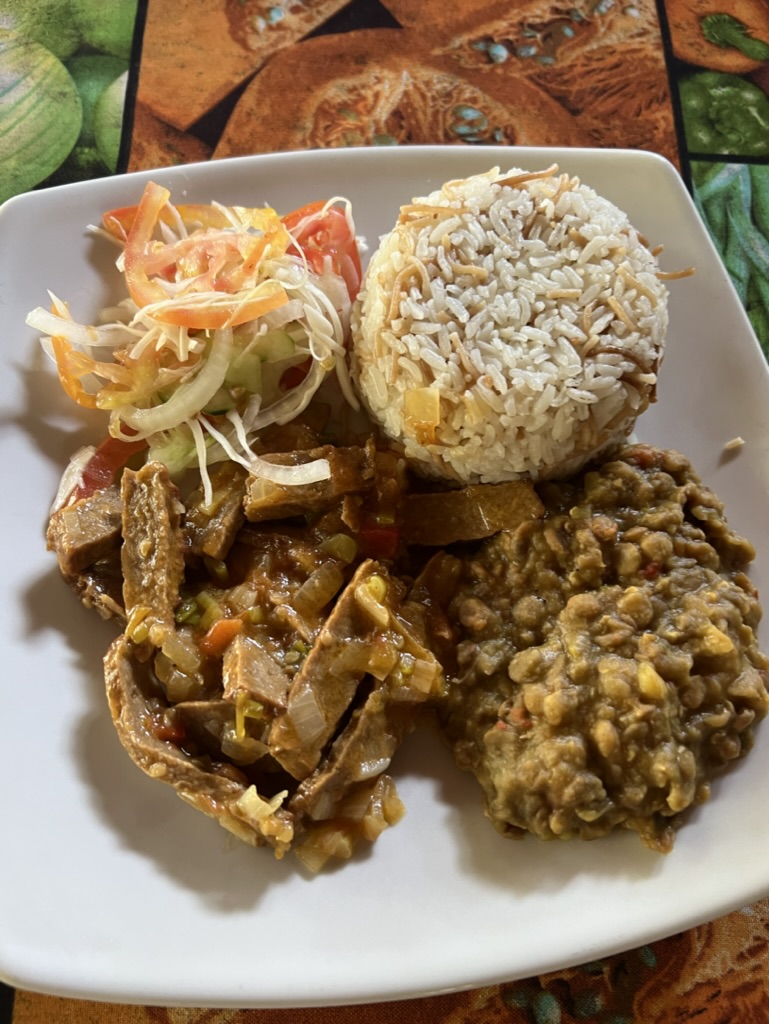
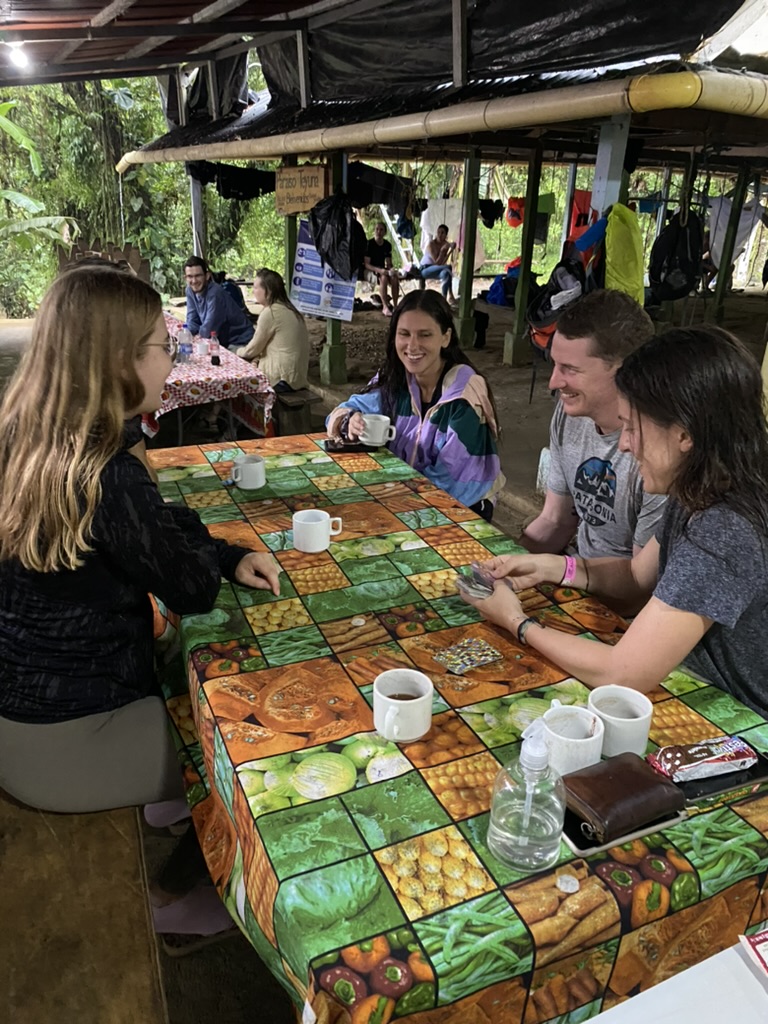

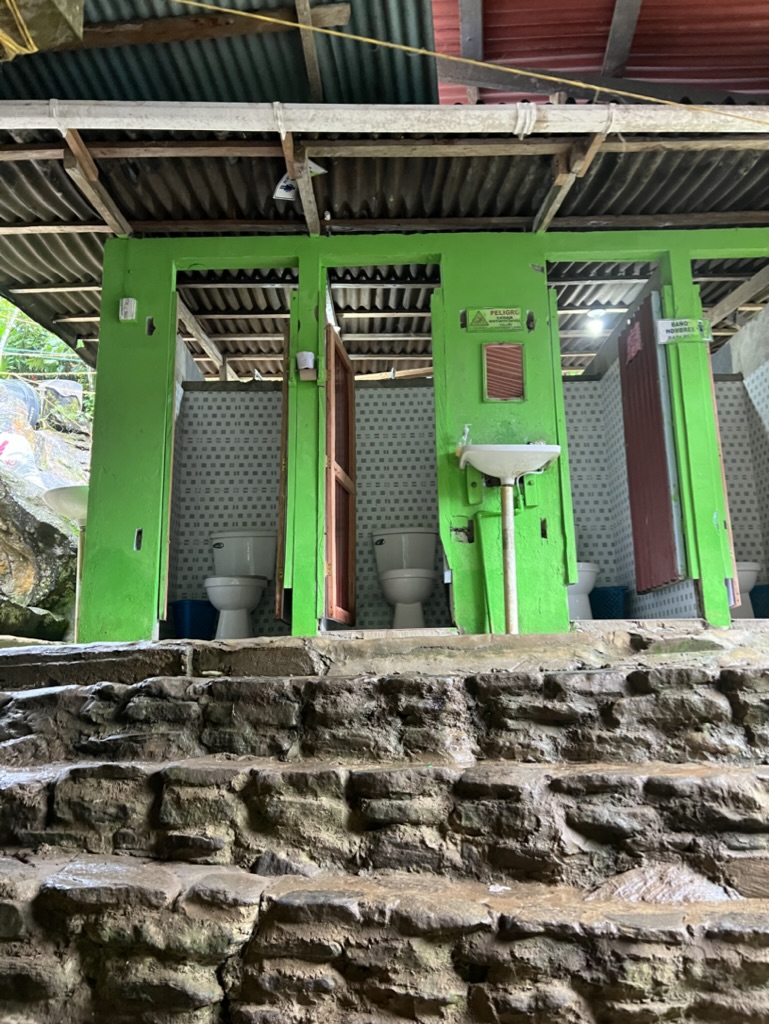
What to Bring:
The art of being prepared while bringing as little as possible to lighten your bag
- Rain jacket: this is a non negotiable. It will rain and you will not be happy without one. The tour will provide you one, and only one, garbage bag for when it rains. This is used to keep your backpack dry. If I were to do it again, I’d probably bring a rain cover as this is a real bootleg way to keep your belongings dry
- Hiking shoes and hiking socks: I wore the Adidas trekkers, bought in a mall in Medellín. These were a game changer. Could you do the trek in sneakers? Yea. Will you be happy about it? No. It can become insanely muddy, slippery, and overall just wet. Bring one or two pairs of quality hiking socks. Some people also enjoyed having water shoes for river crossings and/or flip flops to walk around the camp sites. As this would have been nice, definitely not necessary
- A bag to separate your wet clothing. Though we tried, most items just didn’t dry once they were wet since the jungle is innately humid with sparse direct sunlight fighting past the canopy of trees
- Water for the first day and then you can re-use that container to fill up at the camp sites
- Snacks are optional. I didn’t need any. Don’t bring anything that could melt
- Towel/toiletries: toothbrush, toothpaste, soap, shampoo, conditioner, sunscreen, bug spray. and a fast dry microfiber towel. The showers were freezing, so I stuck to the essentials
- Clothing: Quick dry material is a must, though don’t count on it actually drying if it’s drenched. I would bring one pair of light weight pajamas that stay clean, three or four shirts, two or three leggings/pants. I didn’t find the bugs to be terrible, but I heard horror stories from others. I chose to wear long light layers to be safe, one bathing suit
- Cash – the shaman or his daughter will offer you a bracelet at the lost city, not required but most people give a small tip in exchange. You can also use the cash to buy snacks and water along the way and a beer at night. Probably not surprising but you cannot use credit card on the trek. At some of the camps you can buy questionably working wifi though
- Activities: cards or any type of small portable game. You will be highly appreciated by your group as there is a bit of downtime and not so much to do
- Ear plugs or headphones: You’re sharing a sleeping area with manyyyy others, not to mention wildlife and flowing rivers. If you’re sensitive, these are a must. I also enjoyed having headphones for part of the trail, though a bit unsocial, the rest of the group was speaking German anyways
- Medications: anything that you take daily, bandaids, antibacterial ointment, stomach settler of choice. I didn’t need any, but this is not the place you want any issues. There are no bathrooms between camps
Things to remember:
- To state the obvious – Be respectful of the indigenous culture. Some kids will want to talk to you, many won’t. It’s so incredible to see the Wiwa people living amongst the trail. When you feel like it’s taking all you have to scale a hill, you’ll see a 9 year old skillfully running past in rain boots as if it’s nothing
- Pain is temporary and suffering is optional, it’s 90 percent mental. Put a smile on your face and keep on going. You’ll make it and it will be sooo worth it
- The trail is closed in September for reparations
